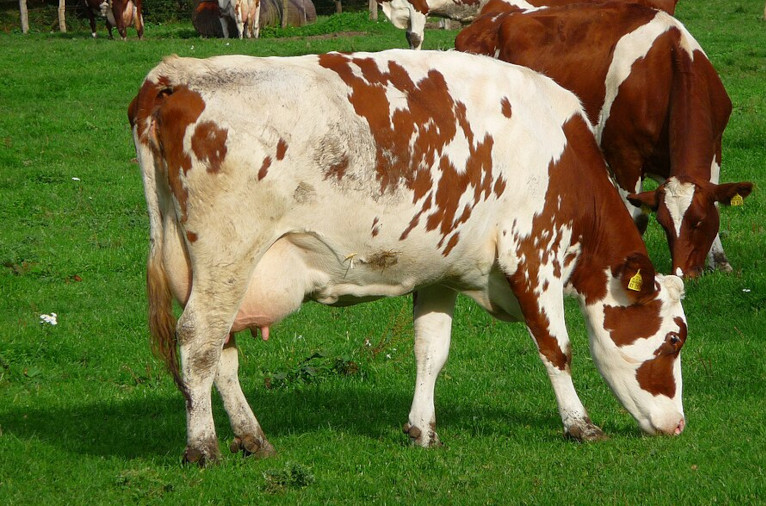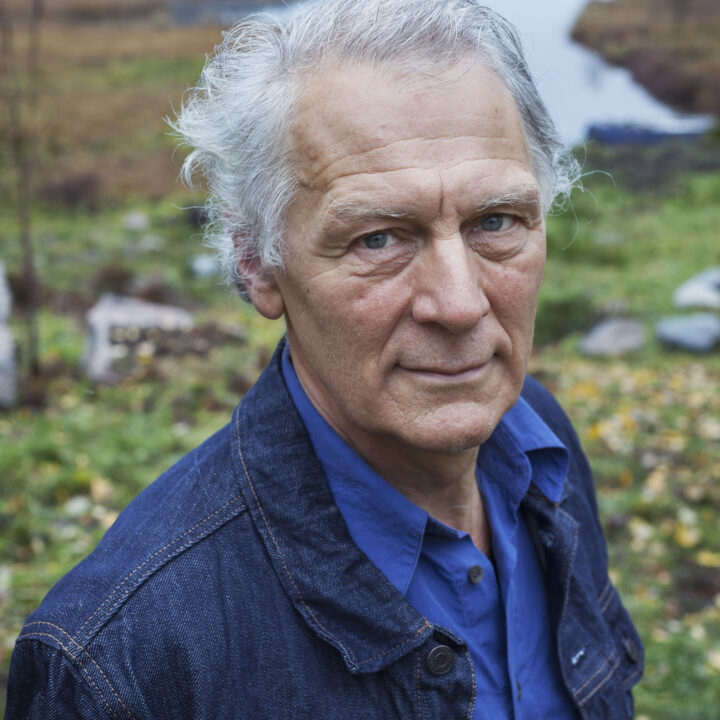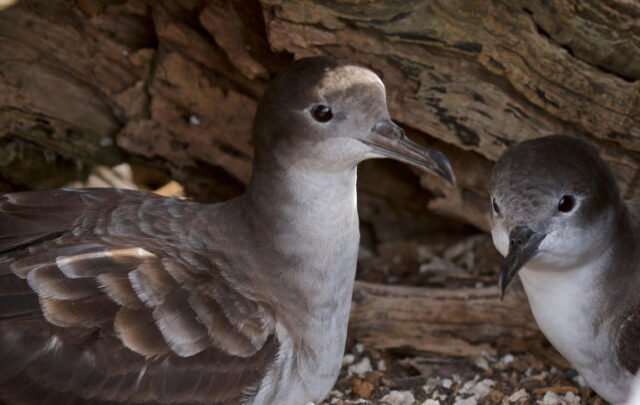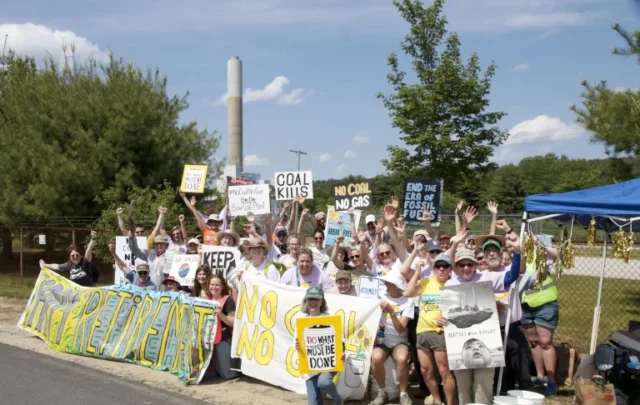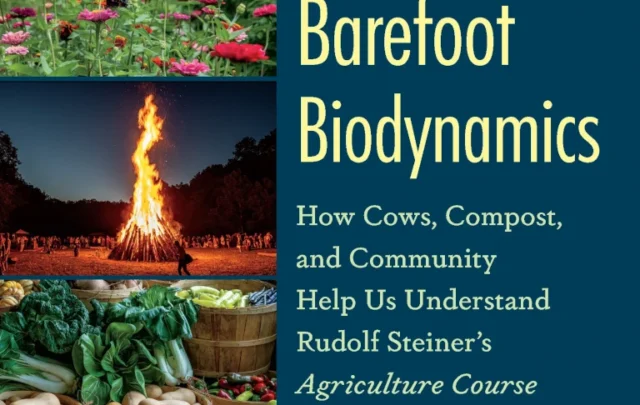Over the last decade, there has been a heated discussion about the possibility to sequester carbon in agriculture soils. I believe that nobody claims that it is impossible but there is huge disagreement about how much and for how long this can take place. Some claim that it is possible to sequester tons of carbon per hectare every year (for eternity?) while others claim that we are rather talking about some hundred kilos and that the quantity will level off and reach a new equilibrium.
A special strand of the debate is to what extent carbon sequestration in grasslands can offset greenhouse gas emissions from ruminants grazing them. In my view there are exaggerations on both sides of the debate. I have written about this topic before (here and here).
A recent article in Nature communication, Risk to rely on soil carbon sequestration to offset global ruminant emissions (Wang et al 2023), has restoked the debate and has been claimed to be the “nail in the coffin for the suggestion that carbon sequestration can offset the methane emissions” by one of the authors, Pete Smith.
The strong side of the research is that, instead of using the commonly used metric of GWP-100 for recalculating methane into the ubiquitous, but still dubious, unit carbon dioxide equivalent (CO2e), it has used a simple climate model that estimate the real climate impact of methane (CH4) and nitrous oxide (N2O). Unfortunately, this strong side is also a weakness when applied by the researchers. I will come back to this later.
The article compares the potential of grasslands to offset the emissions from ruminants. According to the model, one ton of carbon sequestered in grassland soils can offset continued emissions of 0.99 kg CH4 and 0.1 kg of nitrous oxide over 100 years. On a global scale that means that 135 gigaton of carbon is required to offset CH4 and N2O emissions from the ruminant sector worldwide. And that is not possible, according to the authors, as it would mean that the carbon content of the grasslands need to triple.
For sure, one can question the possibility of tripling the carbon content of grasslands (but as I will discuss later this may also be a miscalculation). I can’t judge and I would say that one should be skeptical when anybody make firm statements about the potential, regardless in which camp they belong. Let me instead focus on some other critical perspectives on the research.
Should grazing cows offset feedlot emissions?
The research includes all ruminant emissions of CH4 and N2O. But I don’t think that anybody ever has claimed the grazing ruminants would offset emission also from cows that are fed primarily with crops from arable lands, i.e. feed lot systems. Those that promote carbon sequestration in grazing are certainly not simultaneously promoting feed lots. Of all the ruminants in the world, a majority are grazing and a smaller share is locked up and fed crops. Many, especially dairy cows, are both grazing and get supplementary feed. One estimate is that of the total ruminant feed intake 55% is from grazing. If the focus is on grasslands and its ability to sequester carbon, it seems like a more reasonable calculation to compare the emissions from those animals that actually graze or the share of grazing in their diet.
This also has implications on my second observation. In the article it is stated that one hectare of grassland could, at most, sequester carbon corresponding to CH4 emissions of 1.25 heads of cattle. But then the authors claim that the density of cattle “generally is much higher than that”. But if you estimate the area of grazed grasslands to 1.6 billion hectares (which the authors do) and the actual number of cattle and buffaloes the average global density of cattle is far below 1.25 heads per hectare. If you add all sheep and goats you can possibly reach something like 1.25 livestock units. But that includes all ruminants including the feed lot ones. So the average global stocking density of grazing animals is certainly much lower than 1.25 heads per hectare.**
Are emissions new?
I have no ability to judge the quality of the simple climate model as such and I assume it is OK. But the application of the model is that they start the model with a situation of existing grasslands and no ruminants. Methane emissions (I will briefly also discuss N2O emissions below) thus go from zero to the full emissions of 1.5 billion cattle at once. And then they compare the emissions over a 100 year period and the carbon sequestration potential during the same period. This means, however, that they replicate the same error that is intrinsic to the GWP-100 which they have concluded is not applicable: “The GWP calculation with a 100-year time horizon, for instance, would suggest that if CH4 emissions continue after year 100, additional soil carbon sequestration would be needed to offset the warming from the additional emissions. This is, however, not the case since CH4 is continuously broken down and removed from the atmosphere”.
The marginal warming of the methane from ruminants after year 100 is very small. The warming the first 100 years is around 9 times higher than the warming caused by the same emission the following 100 years. Also the first 100 years, most warming caused by methane emissions occur the first decades. In reality, there were a lot of cattle already 100 years ago. I have not been able to find any reliable figure for that, but according to this article was the number of cattle 1960, 61 percent of the number 2020 and methane emissions also changed accordingly. Perhaps the number of cattle 1920 was somewhere in the range of 40% of the number in 2020. This means that, using the same simple climate model, but taking into account that most of the cattle was already there for many decades that the additional carbon sequestration needed to offset the methane emissions from these cattle from now and 100 years ahead is much lower than the figures given in the article (I don’t have the time, skills or access to the model to make a full re-calculation but it is probably in the range of one third). There is more to say about the climate effect of methane, I plan to come back to that shortly.
Low nitrous oxide emissions from grazing cattle
In the short term, methane is more important but in the longer term nitrous oxide is a much more potent greenhouse gas. Already after 35 years the emissions from nitrous oxide cause more warming than methane according to the article and over a period of 500 years 15 times as much warming. The calculations in the article are based on that all nitrous oxide emissions from domestic ruminants are included according to standard emission factors. But most nitrous oxide emissions from ruminants are from intensive ruminant keeping and feed production (where it in turn originates in the use of synthetic fertilizers). Grasslands which are not fertilized with synthetic fertilizers (most grasslands are not) and grazed by livestock that doesn’t get supplementary fed have very low nitrous oxide emissions. When Brazilian researchers measured how much nitrous oxide was emitted from the urination of cows on pasture, they found that merely 0.2% of the nitrogen was converted to nitrous oxide. This is one tenth of the standard emission factor used by the IPCC. A meta-analysis of 422 studies of nitrous oxide emissions from land fertilized by animal manure or chemical fertilizer revealed that emissions are considerably lower than the IPCC standard emission factors for manure and considerably higher for chemical fertilizer. The combination of the fact that a significant share of the feed of ruminants comes from arable land and that the emission intensify of those is much higher, means that the article exaggerates the warming impact of N2O from grazing animals very much.
Missing baselines
For both methane and nitrous oxide, there are also missing baselines. The assumption is that there would be no methane or nitrous oxide emissions from these grasslands if there were no domestic ruminants. But that is clearly not correct. First, there are wild herbivores, mostly ruminants, and their numbers would (hopefully) increase rapidly if grasslands were abandoned. One team of researchers estimates that greenhouse gas emissions from a savannah with wild herbivores will be in the same order of magnitude as emission as when grazed by domestic animals. Secondly, there are termites and many other creatures grazing biomass and they also emit greenhouse gases. Third, if grass is not grazed it will rot, and emit methane and nitrous oxide in humid climates. In arid climates, ungrazed grass will sooner or later burn, and also emit methane and nitrous oxide.
On the other hand, if one compare grasslands with forests one could claim that the carbon storage is higher in forests than in grasslands, some even refer to this as a “carbon opportunity cost” for grasslands. But that is a far too simplistic notion as many grasslands of the world are not at all suitable for reforestation, that carbon storage in forests is higher above ground and lower below ground, and the storage above ground is not a very stable stock. The emissions of nitrous oxide is also mostly higher from forests than from grasslands, which should be included in any such calculation.
How much carbon is there?
The figure of 78 billion metric tons of carbon in managed grasslands used by the authors seems to be very low compared with other sources (e.g. Jordon et al 2024). It is a shortcoming that they include only the top 30 cm of the soil as most long term stored carbon is in the deeper layers. In addition, it seems to me that the assumption is that the carbon sequestration rate per year is rapidly declining and that the possibility to sequester more carbon is biggest in degraded soils. While this is a common view, I believe this is not really proven. On the contrary, I believe (but can’t prove) that good soils can continually sequester carbon if managed in the right way, see more in the fact box.
Sequestering carbon in soils
I believe that the jury is still out on many of these issues. But, taking into account that the global loss of carbon from agricultural soils since 1750 has been estimated to some 80 billion metric tons, reversing that loss would indeed mean a lot. The accumulation (or loss) of carbon in soils is basically a result of the difference between carbon added through the photosynthesis and carbon taken away from the field in crops and the respiration and degradation processes in the soil.
To give you an idea of magnitudes (derived from a report I made for the Royal Academy of Forestry and Agriculture): The net primary productivity (NPP) of Swedish agriculture is 19.2 million tons of carbon, approximately 7 tons per hectare. Of this 14.8 million tons go back into the air and 5.4 million tons are harvested. 1.8 tons of the harvested carbon comes back as manure. In the range of 0.7 million tons is accumulated in soils, i.e. some 250 kg per hectare and year. Expressed as carbon dioxide that is almost 1 ton per hectare and year (1 kg C equals 3.67 kg CO2). The main reason for that Swedish mineral soils* sequester carbon is that some 40 % of the land is in ley, perennial grasslands, grown for feed to cattle, sheep and horses.
Simply put you can increase soil carbon content by increasing input (NPP), decrease what you take out (harvest), increase what you recycle (manure, human waste and food waste), or decrease decomposition rate, in any combination. Peat is one extreme example of where input is low, nothing is taken away and decomposition is very slow as a result of lack of oxygen. On the other side you have soils in arable annual (mono)cropping with intensive tillage, high yields and little recycling to the field, e.g. potatoes, which will lose carbon continually. In general, carbon in roots is more persistent and contributes to increasing carbon content much more than carbon in above ground biomass, which is one of the reasons for why grasslands can sequester more carbon than croplands.
It is not as straight forward to measure changes in carbon stocks that one might believe for a number of reasons:
-There are many methods for measuring carbon in soils and none of them can measure short term changes reliably.
-Measuring changes in carbon content in a specific layer of the soil and using that as a measure of carbon sequestration, omits what happens with the soil in total. Soil can grow “deeper”, by root activity and “higher” by accumulation of litter and dust on the top (if you ever had stepping stones in a lawn I believe you have observed how hard it is to keep them free from vegetation). This is how “soil” is made in the first place. One can very well sequester a lot of carbon in a soil while the carbon content 0-30 cm remains constant.
-Measurements of “carbon” are mostly only in the upper layer of soil, often the top 30 centimeters and sometimes as little as the top 10 cm. But the stable carbon fractions which can be stored over a long time are found deeper down. The carbon content deeper down is lower, but it is a lot more stable.
If you want to read more about the topic, I can recommend this article by Regenetarianism and this article discuss how various grazing strategies influence soil organic matter. For all the reasons stated above, I don’t think the article brings much clarity to the discussion about the potential of grasslands to sequester carbon to offset emissions from grazing animals, rather the opposite, in particular by not limiting the data to animals that are actually grazing, by counting all methane emissions as new emissions and by applying nitrous oxide emission factors to grazing animals which are far too high. I believe the “nail in the coffin” was bent.
A pointless pissing contest
In general, I believe that the efforts to claim or disclaim the effect on grazing on the total emissions on a global scale is rather futile. It is much more interesting and relevant to look into real situations on local scales and discuss under which conditions the management of cattle causes no or low emissions.
For instance, on my small farm we have a small herd of cattle of five mothers with off-spring. They graze a bit less than half the year and get hay the other half (as it is too cold, frozen or wet for them to graze in winter). All feed is from the farm and there is no use of synthetic fertilizers neither on the permanent grasslands nor on the ley. There have, roughly, been the same biomass of cattle here for more than 100 years so the methane from the herd doesn’t contribute to any further global warming at all. The emissions of nitrous oxide from the grassland or the ley must be very small and not higher than natural baselines. Most of the manure collected in the winter is used in the production of vegetables and apples and the emissions from that manure should rather be allocated to those crops (if we didn’t use manure to them we would have to use synthetic fertilizers or some other source of nutrients). The only real greenhouse gas emissions that should be allocated to the herd is from the diesel fuel, plastic wrap and what is embedded in the machinery used for forage harvest. That will not amount to more than a ton of CO2 per year, or less than 1 kg CO2 per kg carcass weight, less than 5% of the emissions normally quoted for beef under Swedish conditions. Even with very moderate carbon sequestration rates in the soil – just 15-20 kg per hectare and year – the herd would be “carbon neutral”. There are certainly other local situations where grazing cattle will be considered more damaging, such as grazing in cleared rainforests.
The debate about the greenhouse gas emissions from cows, sheep and goats has taken up far too much space and been isolated from the bigger discussion of how we manage landscapes and how we create sustainable agro-ecosystems. The main feat of grazing animals is that they are net contributors of nutrients to the agri-food system and that they maintain very bio-diverse landscapes. The main drawback of grazing animals is that they use much land that could be filled with wild herbivores and that farmers, ranchers and herders tend to be very hostile to predators. Although, the link between dwindling numbers of wild herbivores and grazing animals is not that straight-forward.
Grazing animals, if properly managed, is probably the most sustainable way to produce food without destroying soils or depleting resources. The high land use, however, sets limits for how many grazing domestic animals we can have as well as to how big a share of the diet that could come from them (I made some rough calculations of that here). Those that claim that grazing animals can only make a marginal contribution to human nutrition are mistaken. Those that claim that we can feed the global population with grass-fed beef are equally wrong.
* Sweden also has peat soils which are losing carbon.
** Many sources instead claim that livestock graze 2-3 billion hectares, Our World in Data even claims that 3.2 billion hectares are “grazinglands”, but Our World in Data constantly exaggerate the negative impacts of cattle. I tend to agree more with the 1.6 billion hectares used in the article discussed as well as in this article.


